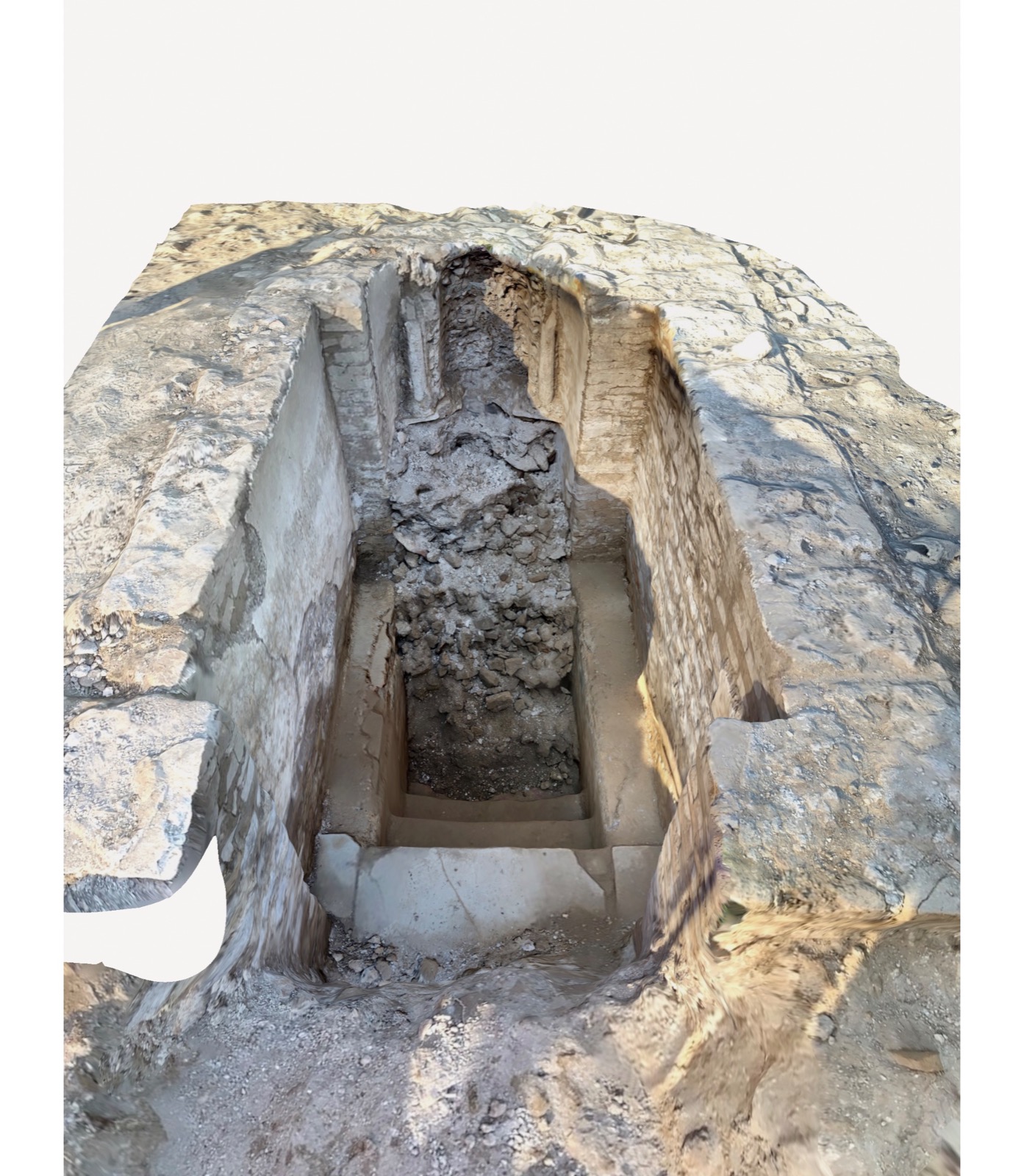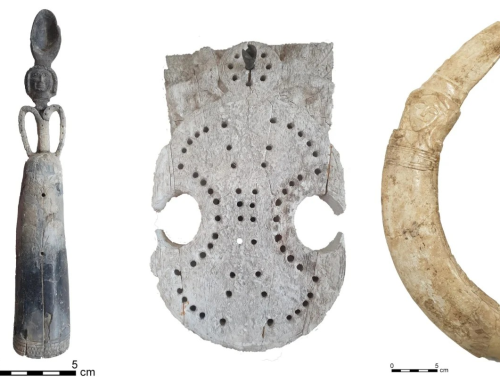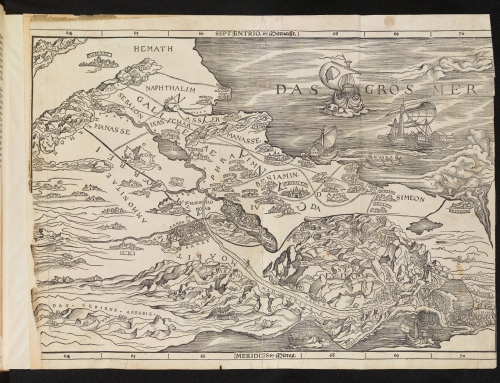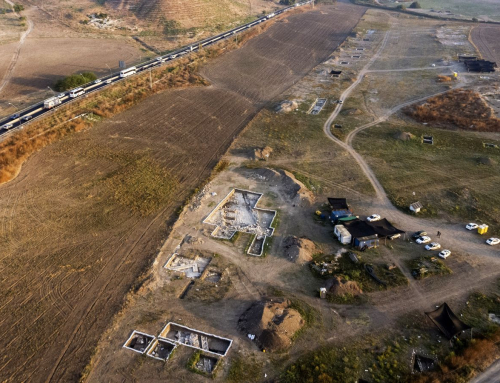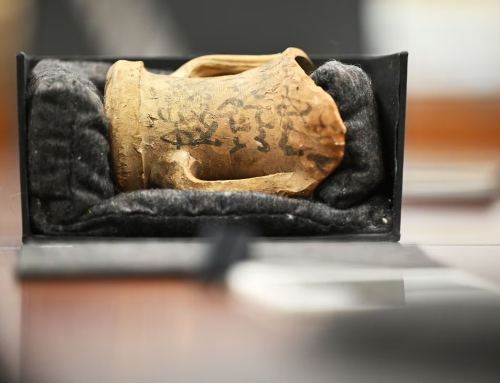A Jewish ritual bath (mikveh) emerged from excavations conducted in the Archaeological Park of Ostia Antica in June and August 2024. The excavation campaign, carried out as part of the OPS – Ostia Post Scriptum project, was financed by the Ministry of Culture, through the Directorate General for Museums, with an allocation of funds dedicated to the execution of archaeological research in the year 2024, from chapter 7515 cdr19, for an amount of € 124,190.41.
On March 10 at 3.00 pm, the discovery was announced and presented at the Ostia excavations.
“The discovery of an ancient Jewish ritual bath, or mikveh, which came to light in the archaeological park of Ostia Antica,” says the Minister of Culture, Alessandro Giuli, “reinforces the historical awareness of this place as a true crossroads of coexistence and exchange of cultures, a cradle of tolerance between different peoples who found their union in Roman civilization. It represents a unique in the Mediterranean area of the Roman age outside the Land of Israel and attests to how deeply rooted the Jewish presence was in the heart of Romanity. It was in Ostia that Rome welcomed and hosted the original cults of other Mediterranean civilizations, at the moment when, having consolidated its power in Italy, it began to project itself into the Mare Nostrum. A miscellany of ethnicities and influences, together with the two monotheistic religions of the time, which testifies to how ecumenical and universal Rome was. We are proud that this discovery is the result of the resumption of excavation activities promoted directly by the Archaeological Park of Ostia Antica – thanks to funding from the MiC which will continue to invest resources in this discovery – which on the one hand has made it possible to return to promoting research activities and on the other hand to expand and make more accessible the areas that can be visited by the public”.
“This exceptional discovery,” says Alfonsina Russo, Head of the Department for the Enhancement of Cultural Heritage, “confirms on the one hand the importance and specificity of the ancient city of Ostia, Rome’s port and gateway to the Mediterranean and for this reason an ethnic, linguistic, religious and cultural melting pot in the broadest sense and, on the other hand, the unusual potential of the Italian historical-archaeological heritage. In deference to the research/knowledge-protection/conservation-enhancement of this extraordinary heritage, the discovery of the Ostian mikveh, the first so ancient to come to light outside the borders of Israel, can only make us proud and at the same time determined that the monument is usable as soon as possible by the public of visitors who increasingly frequent and appreciate our places of culture».
“Thanks to the funding allocated by the Ministry of Culture in recent years,” says the Director General of Museums Massimo Osanna, “it has been possible to implement a plan of interventions on a national scale, promoted in particular by the Directorate General for Museums, aimed at scheduled maintenance, the promotion of archaeological research and the enhancement of cultural institutes and places. In this context, the Archaeological Park of Ostia Antica has played a leading role, distinguishing itself for the innovativeness of the interventions designed and the excellence of its research projects, such as the one that led to the discovery of the mikveh. A find that testifies to the multicultural character of the ancient port city and opens up new and fascinating scenarios for the expansion of our knowledge and the development of new narratives.”
“This is an absolutely extraordinary discovery,” says Alessandro D’Alessio, Director of the Archaeological Park of Ancient Ostia, “as there were previously no known mikva’ot from Roman times outside ancient Judea, Galilee and Idumaea, and which can only confirm the extent of the continuous presence, role and importance of the Jewish community in Ostia throughout the imperial age (if not before): from the beginning of the first century (the period to which the oldest known inscription in Italy mentioning Iudaei, found in the nearby necropolis of Pianabella, dates back) to the V-VI century, when the Ostian synagogue – the oldest in the western Mediterranean (it was in fact built at the end of the second-beginning of the third century) and the only one preserved in Rome – ceased to live following the definitive abandonment of the city».
“The discovery of this site, which has the characteristics of a miqwè,” says Riccardo Di Segni, chief rabbi of the Jewish Community of Rome, “is of extreme interest from many aspects, archaeological, historical, ritual. The history of the Jews of Rome is enriched today by a further, precious monument that testifies to their millenary settlement and the care in observing traditions: the uncovered environment is also functional and elegant. A structure like the one discovered could not be isolated from the building complex in which it is located and it is likely that mostly, if not all, this was a center of Jewish aggregation. I hope that the excavations can continue while waiting for other surprises and that soon it will be possible to access visitors who will not be missing due to the importance of the find.”
“The discovery of the probable miqwè in Ostia, in fact the oldest discovery of its kind in the world of the Diaspora, subsequent only to those of Judea, Galilee and Idumea, is a source of great emotion,” comments Victor Fadlun, President of the Jewish Community of Rome. Emotion and pride, for the confirmation of the millennial roots of the Jews in Rome, and of the umbilical cord that binds us to the Land of Israel. The miqwè is the sign of a living presence, which has been perpetuated over the centuries and brings us today. The demonstration of an identity that many generations of Jews have managed to preserve, defend and enhance. I thank all those who have made decisive scientific and financial contributions to this important result. And I hope that it will restore prestige and benefit to the entire territory.”
The OPS – Ostia Post Scriptum project was born in 2022 from a collaboration between the Archaeological Park of Ancient Ostia (responsible the Director, Dr. Alessandro D’Alessio, and Dr. Claudia Tempesta), the University of Catania (Prof. Luigi Caliò, Prof. Gian Michele Georgiannis) and the Polytechnic of Bari (Prof. Antonello Fino) and is aimed at carrying out investigations in two strategic areas of the city of Ostia, the first Roman colony and a very important urban center of antiquity, to better understand its development over time. Moreover, it had been several decades since the Park, formerly the Archaeological Superintendence of Ostia, had not carried out its own archaeological excavations (hence the name OPS of the project), with the primary objectives of: promoting research activities, with particular reference to those directly taken care of by the Park, in order to increase knowledge about Ostia; implement the use of the site by restoring continuity to the visit path; promote the sharing of knowledge through public archaeology actions; strengthen scientific collaboration with other research institutions.
The research was able to concentrate in particular on the sector, called “Area A”, located in an absolutely central area of the city, both from a topographical/urban and architectural point of view, as it is located near the ancient course of the Tiber and between the building of the Great Horrea to the west, the republican sanctuary of the Four Temples, the Mithraeum of the Seven Spheres and the Domus of Apuleius to the south, and the Piazzale delle Corporazioni to the east. Surprisingly, in spite of its centrality, this area had never been investigated before and was therefore ideal for new excavation activities, qualifying as an intact stratigraphic basin.
This is how inside a large and sumptuous building discovered here and already widely brought to light, among the remarkable remains of the rooms that compose it and some wonderful floor mosaics with black and white tiles, a small semi-hypogeum room with a well below for the ascent or in any case the withdrawal of groundwater, in which a mikveh (מִקְוֶה / מקווה?, Mikve, “Miqwā”) can in all probability be recognized, or a Jewish purificatory ritual bath.
The semi-hypogeum room is a small rectangular room, closed on the east side by a semicircular apse, which has different building phases. In the last, it is accessible from the western side through a large marble threshold with a raised external edge and is occupied almost for the entire width by a staircase, consisting of three steps with considerable traces of wear and tear and flanked by two masonry abutments covered inside with hydraulic plaster; the floor at the end of the staircase, made of bipedal bricks (square bricks of 60 cm on each side), was placed at a height about 1 m lower than that of the entrance threshold and had a recess about 3 cm wide that also continued on the side walls, in all probability functional to the housing of a barrier, perhaps wooden. In the north-eastern corner, immediately above the northern abutment, there is a through hole in the masonry, probably intended to house a pipe for the supply of water.
At the eastern end of the floor there is a circular well with a diameter of 1.08 m, made of cement and crowned by a brick ring probably added later, certainly intended for the collection of groundwater; At the connection with the floor, the perimeter of the well widens to form a sort of invitation. At a depth of 1.10 m from the mouth, the shaft narrows to a diameter of 1.00 m, forming a saw that is most likely functional for the positioning of a grate or removable wooden flooring.
The room was closed on all sides by walls built in opus listata (with tuff blocks alternating with brick resorts) without openings; on the back apse, in an elevated position, a niche was found, 0.60 m high and 0.45 m wide, covered with blue plaster and shells, framed by a pair of stucco-covered columns resting on a surface supported by brick shelves. The excavation of the layers of abandonment and obliteration of the environment has returned materials of great interest: in addition to numerous fragments of plaster, oil lamps, marble fragments belonging to an epigraph and small statues have been found. From the excavation of the well, conducted with the support of Davide I. Pellandra and Mario Mazzoli and Marco Vitelli of the Association of Underwater Archaeology Speleology Organization (A.S.S.O.) to a depth of 1.5 m, comes a lamp decorated on the disk with the image of a menorah (seven-branched candelabrum) and a lulav (palm branch) on the bottom, as well as an almost intact glass glass, both datable between the fifth and sixth centuries AD.
The peculiar characteristics of the room – such as the steps extended over its entire width, the walls covered with hydraulic plaster, the presence of a well for collecting groundwater, the communication duct with the adjacent room (possibly intended to house a pipe for adding water to the groundwater), and again the discovery of the lamp with Jewish symbols at the bottom of the well – lead to the hypothesis of an interpretation as a Jewish ritual bath ( mikveh). Intended for the immersion of people (but also objects) for purification purposes, mikva’ot generally look like rectangular tanks, in most cases covered, dug into the ground and covered with hydraulic plaster, with a row of steps that occupy the entire width, connected directly or indirectly to a spring, a well or a rainwater collection cistern. As prescribed by rabbinical sources (in particular the Mishnah and the Tosefta, both written during the third century AD), the essential requirements of a mikveh are the supply by rainwater or spring water, in quantities of not less than 40 se’ah (about 500 l), and the depth, such as to allow the complete immersion of the body of a man of average height.
The oldest examples of mikva’ot archaeologically documented in Israel date back to the Hasmonean age (late first century BC – early first century AD). Widespread in Judea, Galilee and Idumea in the Herodian age, in particular inside residential buildings, they progressively decreased in the first century until they almost completely disappeared at the beginning of the second, in connection with the full Romanization of the region following the destruction of the Temple in the year 70 AD and the subsequent repression of Bar Kokhba in 135 AD. Subsequent attestations are extremely scarce, including the numerous mikva’ot found in the Galilean city of Sepphoris. So far, there are no known mikva’ot from Roman or late antiquity in the places of the Diaspora, with the only exception of the mikveh of Palazzo Bianca in Syracuse, probably built near the local synagogue between the sixth and seventh centuries AD.

A slightly earlier chronology is reported by the materials found in the layers of abandonment and obliteration of the room identified in Ostia: among these stand out two oil lamps of the Atlas VIII shape, decorated on the disk by a heptalicne menorah (i.e. precisely with seven arms) on a trifid support, one of which with lulav on the bottom, datable between the fourth and sixth centuries AD.

